In the late 1980s and throughout the 1990s, late-night cable television and the shelves of video stores everywhere were saturated with the films of Andy Sidaris. His low-rent James-Bond-as-sex-comedy/ glamour-on-the-cheap aesthetic briefly became a mainstay of fans of direct-to-video action movies or softcore comedies, but his name seems to be unfamiliar to many film fans today who would value or at least know of the work of Russ Meyer or John Waters, filmmakers for whom labels like low-brow or sexploitation were not a problem, but in fact key to their enduring appeal. Maybe this is because unlike Waters’ or Meyer’s films, which focused on exploiting taboo and reveled in subverting social standards, Sidaris’s movies never treated sex as dirty or forbidden, nor did they even seem capable of comprehending that anyone else would, and consequently, they feel naïvely innocent and out-of-fashion for onscreen dealings with sex. Maybe the almost-exclusively hetero, Caucasian, cheesecake/beefcake sexuality his films are concerned with are perceived as unimaginative, pedestrian, or too plentiful in other mainstream outlets to stand out. Or maybe they just no longer titillate.
But assuming that titillation is their chief or only offered pleasure is the kind of mistake that could rob many potential fans the chance to discover the weird, wonderful world that is Andy Sidaris’ cinema.
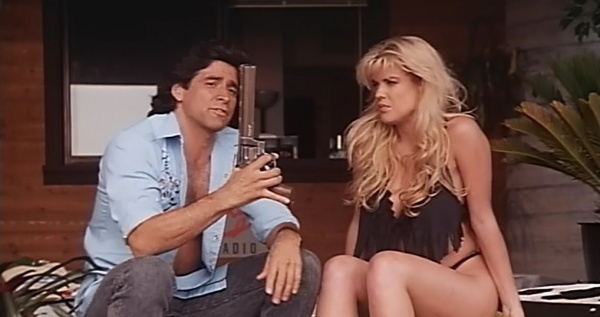
The films of Andy Sidaris were a late-career pivot from a lauded and influential tenure as a sports director for ABC, but the relatively brief period from 1985 to 1998 when he wrote and directed many independent espionage action movies starring a cast of house players heavily populated by Playboy Playmates and Penthouse Pets, body-builders and athletes, is undoubtedly where he left his most enduring mark.
Among the twentieth century baggage the internet is helping new generations leave behind is appointment-viewing of films on broadcast and cable television, as well as the positively quaint notion of eagerly awaiting monthly installments of airbrushed centerfolds in print magazines, and for that reason, it is perhaps difficult for modern first-time viewers to fully appreciate the impact these sexed-up straight to cable/home video films had on their target audience upon initial release. For the bullseye demographic, the posters and video-box covers promised action and sex set in exotic locales, promises delivered upon with an abundance of personality so distinct it held together a franchise of linked storylines as utterly incomprehensible and contradictory as to render chronology insignificant.
Modern first-time viewers, however, have the chance to experience the entire body of work at once, and on a whim, experiencing the slow-motion evolution of one of the greatest arguments for auteur theory of his generation in an age when narrative films are no longer a primary source of titillation for a generation of budding sexualities, and are consumed in a far different manner than originally conceived.
The very specific idiosyncrasies that may have slipped through the nets of even faithful annual watchers decades ago are impossible to miss for today’s binge-viewer, and for many, have probably become the main course to be chewed on and delighted in by frustrated film fans awash in an ocean of schlock-nostalgia faux-grindhouse fare saturating the ‘cult’ category of their favorite streaming platforms; pictures whose greatest pleasure is their title, but whose payloads land well-short of satisfying, all digital features fed through filters designed to replicate the scratches of poorly cared for 16mm film or the problematic tracking on well-worn VHS tapes (particularly in the oft-paused scenes) – flicks that feel generated by a machine mixing elements in a ploy for your brief attention span (redneck, stripper, zombie, nymphomaniac, cannibal, slasher ghosts from outer space!) rather than conjured organically from the mind of actual obsessive whose joy in his creation is palpable, translatable and contagious scene to scene.
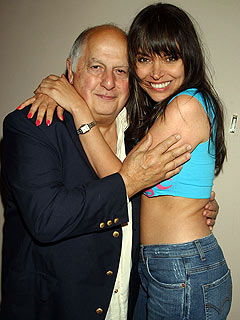
There are no cynical frames in an Andy Sidaris production.
Unlike the enjoyment to be found in the letting-it-all-hang-out-there personal passions of amateur filmmakers like Neil Breen or Tommy Wiseau, Andy Sidaris’ pictures were made by skilled professionals for profit.
His first feature film was a natural off-shoot of his sports television career. 1969’s THE RACING SCENE is a documentary following a racing team run by actor James Garner through a season’s worth of ups and downs across North America and Europe. It showcased Sidaris’ sense for sports photography and featured drivers like Bob Bondurant and Mario Andretti, but outside of the fast cars and loads of onscreen dudes being dudes it bears little resemblance to his other films.
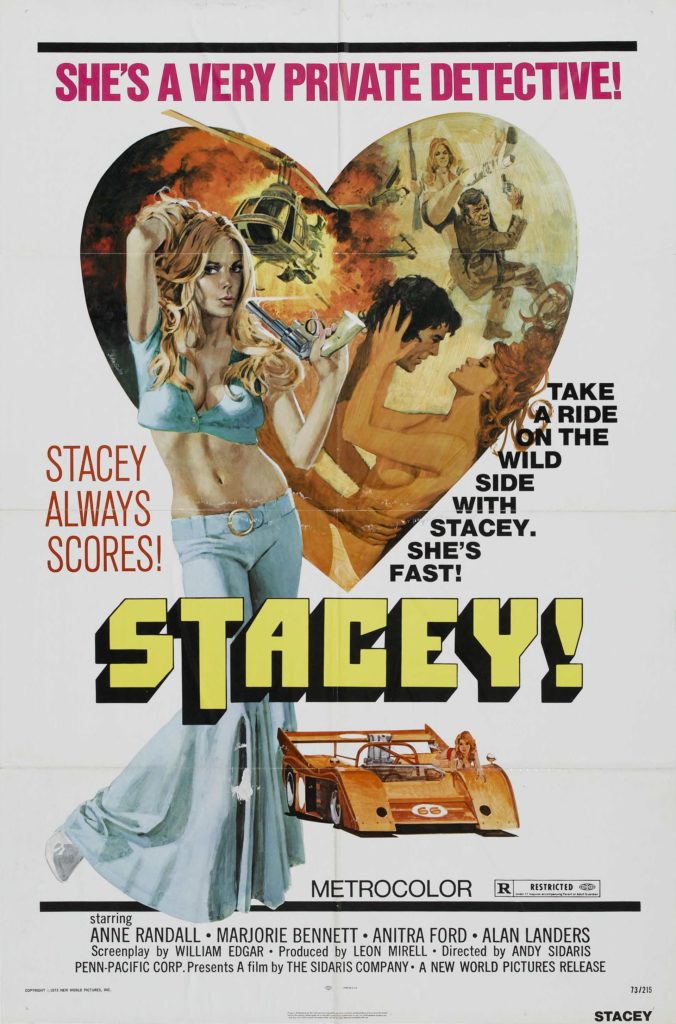
1973’s STACEY was his first foray into scripted, narrative film making, a mystery starring Playboy Playmate Anne Randall as the titular detective untangling the ties that a household of suspects have to a murder victim who was blackmailing most of them. The template for his future pictures was here at the beginning; ample nudity, bad jokes, fast cars and violence. The result was a mix of drawing room amateur sleuth cozies and classic mid-century American hardboiled detective stories that could have played like a slightly horny episode of Scooby-Doo were it not for some surprisingly effective bits of violence. The practical effects, sophisticated action shots and top-notch editing employed particularly toward the end of the picture in a crowded parking lot shootout turned race car/helicopter chase and finally desert gun battle results in moments of real thrills and slow-motion violence on par, technically, with contemporaries like Don Siegel or Sam Peckinpah.

Likewise, 1979’s SEVEN, which starred William Smith as the leader of a group of assassins assembled to take out organized criminals and terrorists attempting to overthrow Hawaii, succeeds as an action thriller of its time, virtually indistinguishable from many other slightly tongue-in-cheek adventure movies of the day, despite many what-the-fuck moments that are signature Sidaris, and may have disappeared into permanent obscurity were it not for his later works. Other than Smith, SEVEN features many recognizable faces including Ed Parker, Art Metrano, Lenny Montana, Martin Kove, and Barbara Leigh.
In a better universe it would have spawned a collaborative team as successful as Charles Bronson and Michael Winner’s. Instead, it would be six more years before Sidaris would make another film and hit his commercial, creative stride with 1985’s MALIBU EXPRESS.
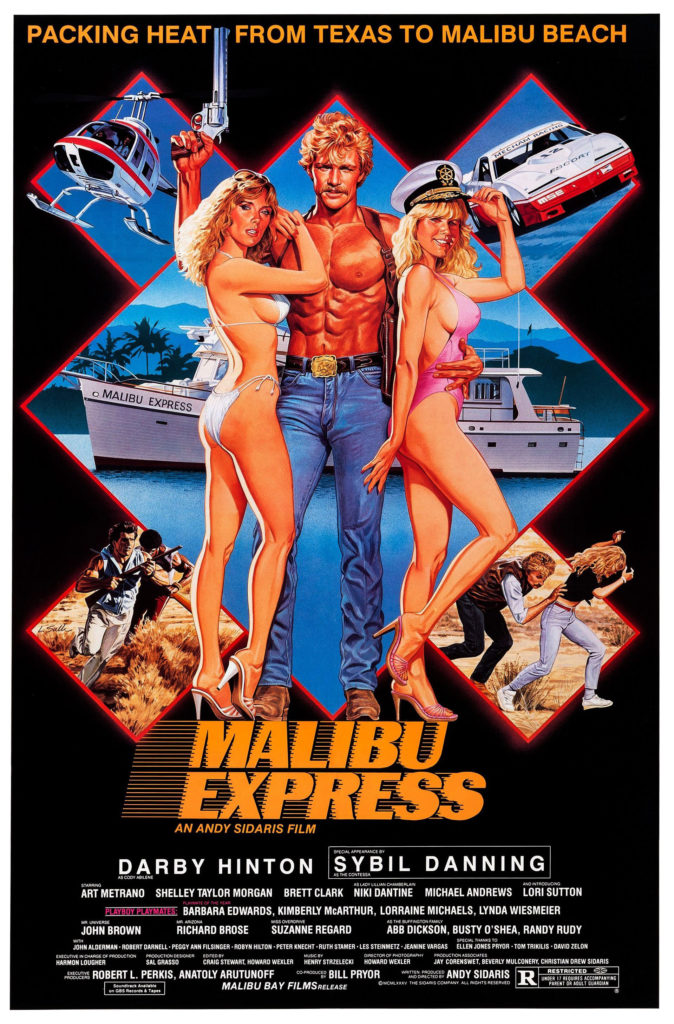
MALIBU EXPRESS is a gender-flipped remake of STACEY with Daniel Boone co-star Darby Hinton out front as private detective Cody Abilene (the first of four Abilenes who will populate the Sidaris-verse), a laid-back Texan amusedly out of place in southern California (though considerably more in step than the obese, coverall and suspender bedecked Buffington family of rednecks constantly taunting him into participating in a car racing feud to accompanying banjo soundtrack), he enjoys playing up his outsider status while ruffling the feathers of the stuffy yacht club board that governs the dock where he resides (on his boat the Malibu Express). He sometimes wears a cowboy hat and carries his .44 Magnum in a cow-hide-print briefcase (a misleading affectation as he is a miserable shot – apparently an Abilene family trait).
Though a remake, MALIBU EXPRESS departs some from STACEY in tone. Gone is any grittiness to the onscreen violence present in STACEY and SEVEN. Instead Sidaris leans harder into the comedic action of television fare like The Dukes of Hazzard and it feels more like a 1970s Burt Reynolds vehicle directed by Benny Hill.
It’s peak Sidaris: full of fast cars, fast women, the aggressive intrusion of ear-violating original songs and groan-inducing jokes, but it is still a crucial evolutionary step shy of his most recognizable gear of operation and the formula he would use for the rest of his career beginning with his next picture, HARD TICKET TO HAWAII.

Enter series producer Arlene Sidaris making the move from her career in television to work as a creative partner with her husband Andy when he wanted to use their house as collateral to finance HARD TICKET TO HAWAII. Also with HARD TICKET the action moves to series-headquarters Hawaii where it begins the never-ending process of expanding ‘The Agency’s’ cast of operatives with special focus on the partnering of Donna and Taryn (Dona Speir and Hope Marie Carlton, Playboy Playmates of the Month March 1984 and July 1985 respectively). While the film and The Agency give them male counterparts (Ronn Moss as Rowdy Abilene, cousin to MALIBU EXPRESS’s Cody, who can’t hit a moving target with anything other than the bazooka he whips out for ridiculously close-quarters use, and Harold Diamond’s Jade), HARD TICKET TO HAWAII, as well as PICASSO TRIGGER and SAVAGE BEACH, belong to Donna and Taryn, whose complimentary partnership is the bedrock of the franchise.
At the beginning of HARD TICKET TO HAWAII, Donna is training her new partner Taryn, apparently working off her federal protection for agreeing to testify against Las Vegas mob figures. Their cover as pilots for agency front Molokai Cargo afford them the opportunity to find trouble stumbling across criminals using remote-control toy helicopters to smuggle diamonds, and to lose a hilariously rendered radioactive python who slobbers and hisses, tears apart without eating hapless honeymooners and turns up late to finish off Rodrigo Obregón’s ruthless heavy Seth, who has thus far survived being shot in the face by Donna, impaled by crossbow and knifed in close-quarters by Taryn.
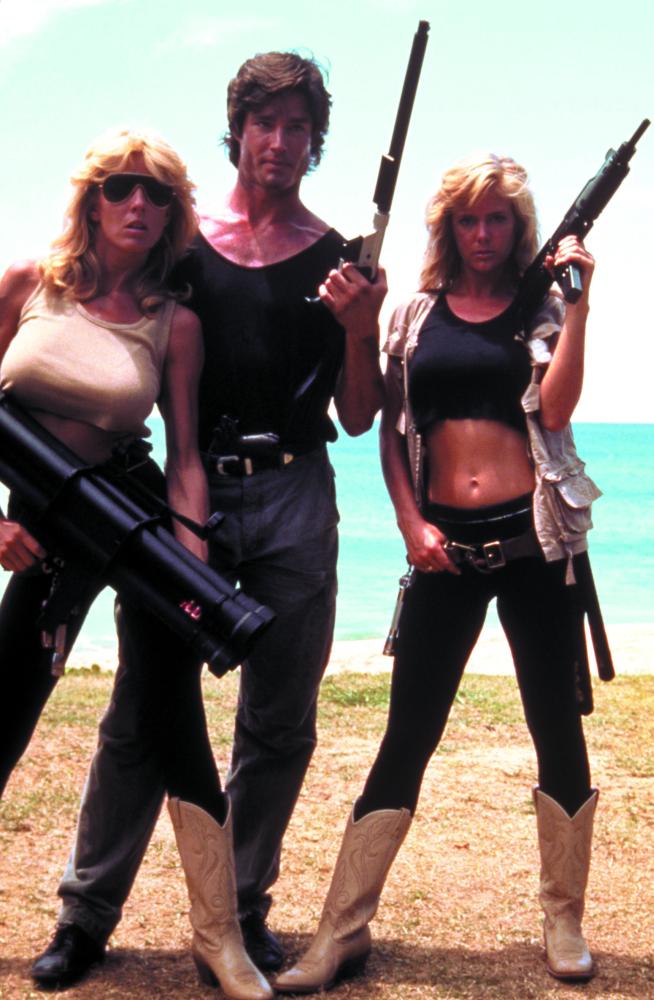
For three films, Donna and Taryn run around in khaki uniforms (and take every opportunity to remove them), flying dangerous missions, coupling with male counterparts and being generally badass, employing a skill set that includes flying, diving, and hang-gliding, as well as demonstrating tech savviness and expertise with guns, crossbows, and hand-to-hand combat. Their male teammates treat them as equals, and any enemies encountered who give off the mere whiff of condescending thoughts generally don’t live long enough to learn from their mistake.
For all the gratuitous nudity, the films never treat their female stars as mere objects or leave them without agency, a quality that sets Andy Sidaris’ films apart from the majority of similarly-concerned fare of the day. And while there’s no doubt the films’ target demographic was young, heterosexual males, there is still considerable lingering lens time focused on male physiques as well.
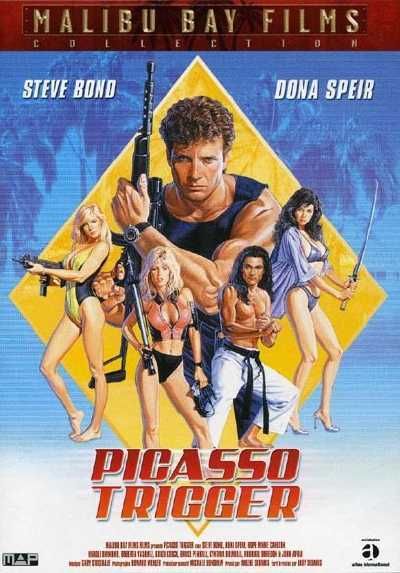
And while the women, especially Speir, Carlton, and latter series regulars like Roberta Vasquez and Julie Strain, are the main attraction, the films are most definitely ensemble projects that feature many multiple repeating performers.
Appearing most often is Rodrigo Obregón, who shows up in ten pictures as villains of varying nationality to be killed off by the time the credits roll, only to return next time with more evil in mind (with the exceptions of his role as Rodrigo in 1998’s RETURN TO SAVAGE BEACH and 1990’s GUNS, in which he plays Large Marge, an undercover agent in drag on the trail of a team of cross-dressing assassins).
The second most-used performer of the Sidaris-verse is championship motorcycle rider Bruce Penhall, who appeared in eight features playing two recurring characters and a single turn as ‘Hondo’. Dona Speir’s Donna is the longest-running series character, with appearances in seven features.
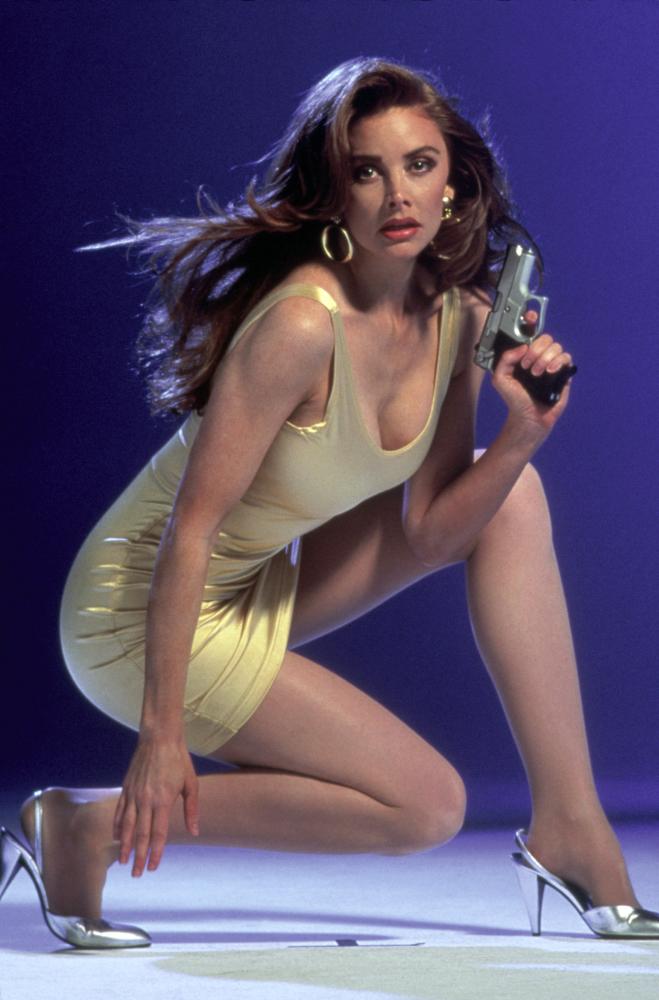
October ’85 Playboy Playmate of the Month Cynthia Brimhall played Edy in six films with a major development coming in 1990’s GUNS. In that one, and in subsequent series entries DO OR DIE, HARD HUNTED, and FIT TO KILL, the films stop dead in their tracks for her to sing yacht-rock originals a la Ava Gardner in THE KILLERS (the least obtrusive example is in GUNS, as her first performance serves as the opening title sequence).
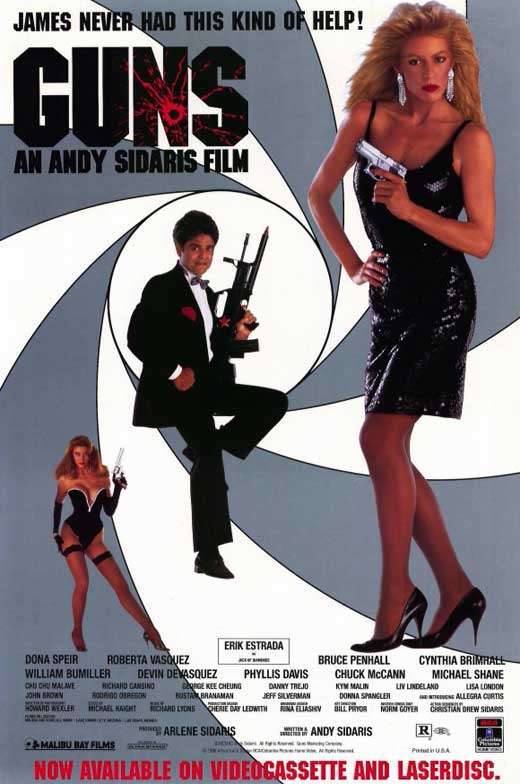
November ’84 PMOM Roberta Vasquez appears in five films, once as villain Pantera in PICASSO TRIGGER and four times as Donna’s ‘long-time’ partner Nicole (after the abrupt exit of Hope Marie Carlton’s Taryn), providing a brunette to balance Speir’s blonde agent out front.
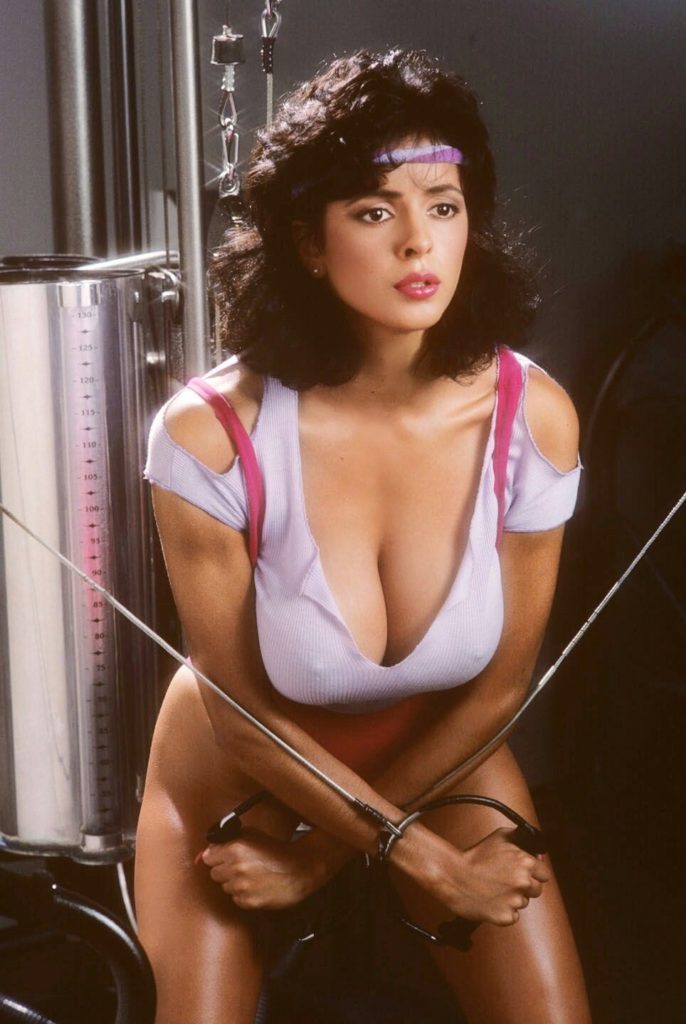
In FIT TO KILL, Penthouse Pet of the Year 1993 Julie Strain joins the franchise for the rest of the run, thrice playing villains (FIT TO KILL, ENEMY GOLD, and THE DALLAS CONNECTION) and then as agent Willow Black in DAY OF THE WARRIOR and RETURN TO SAVAGE BEACH.
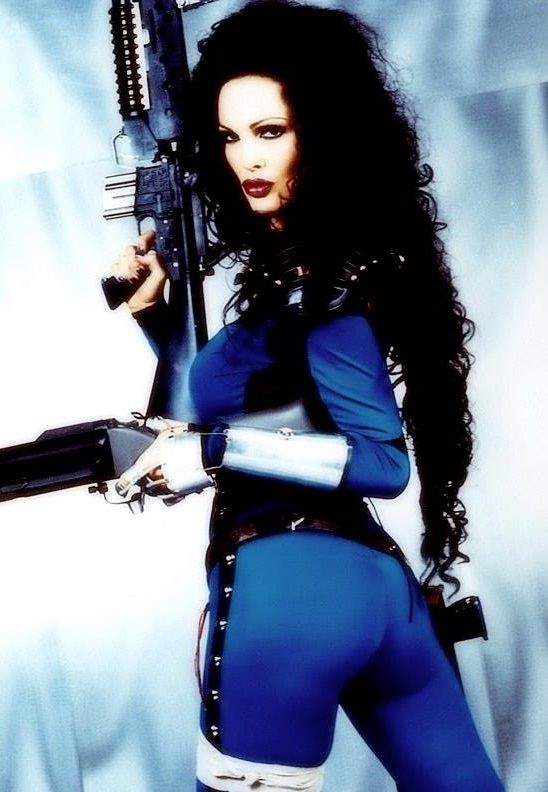
Former professional boxer Edwin “Chu Chu” Malave and Richard Cansino appear as a duo of assassins in GUNS, DO OR DIE, HARD HUNTED, and FIT TO KILL, each time as probably different characters, though in the Sidaris-verse it is impossible to determine, using “Code names, not our real names,” (e.g. Evel & Kenevil, Wiley & Coyote). The duo is increasingly leaned upon for comic relief for reasons inscrutable to fans of comedy, but absolutely perfect for the Sidarisverse.
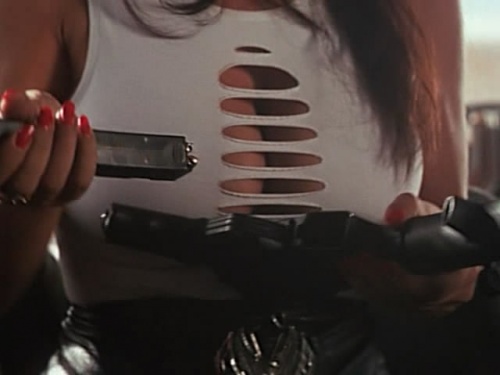
Another four-time team member is Loveologist Dr. Ava Cadell’s Ava, who uses her radio program on KSXY to send coded messages to agency operatives in DO OR DIE, HARD HUNTED, FIT TO KILL, and RETURN TO SAVAGE BEACH.
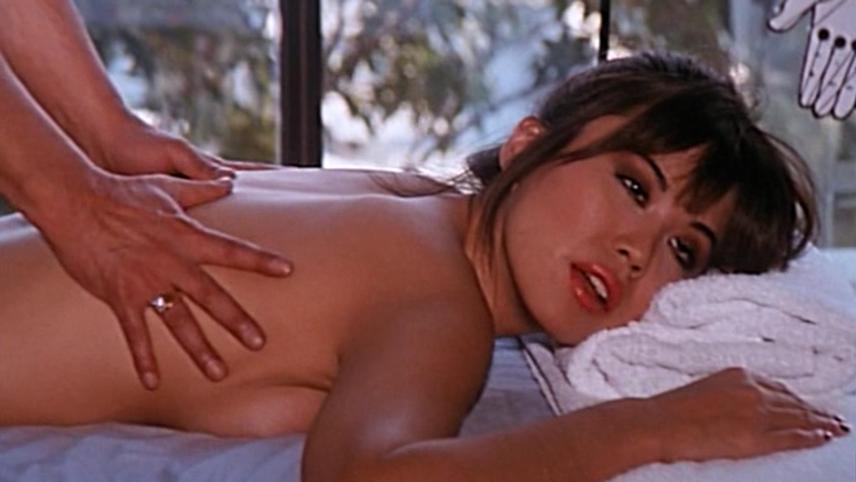
Gerald Okamura brings some martial arts legitimacy to the proceedings as a henchman in FIT TO KILL, and then thrice assumes the role of Fu (THE DALLAS CONNECTION, DAY OF THE WARRIOR, and RETURN TO SAVAGE BEACH) including the chance to nail Fu’s deepest character reveal that he is a part-time Elvis impersonator.

February 1993 Penthouse Pet of the Month Julie K. Smith plays Cobra (undercover as a stripper) in THE DALLAS CONNECTION, DAY OF THE WARRIOR, and RETURN TO SAVAGE BEACH. Also three-peating are Mark Barriere, Skip Ward, Cassidy Phillips, and Brett Baxter Clark while many other players turn up twice including Erik Estrada (once as a villain, once as a good guy) and ‘that-guy’ Al Leong. Other players even revise their roles (Harold Diamond as Jade, Geoffrey Moore as Kane, and pro wrestler Marcus Bagwell as Warrior). A significant percentage of background faces from John Carpenter’s BIG TROUBLE IN LITTLE CHINA also populate the series.
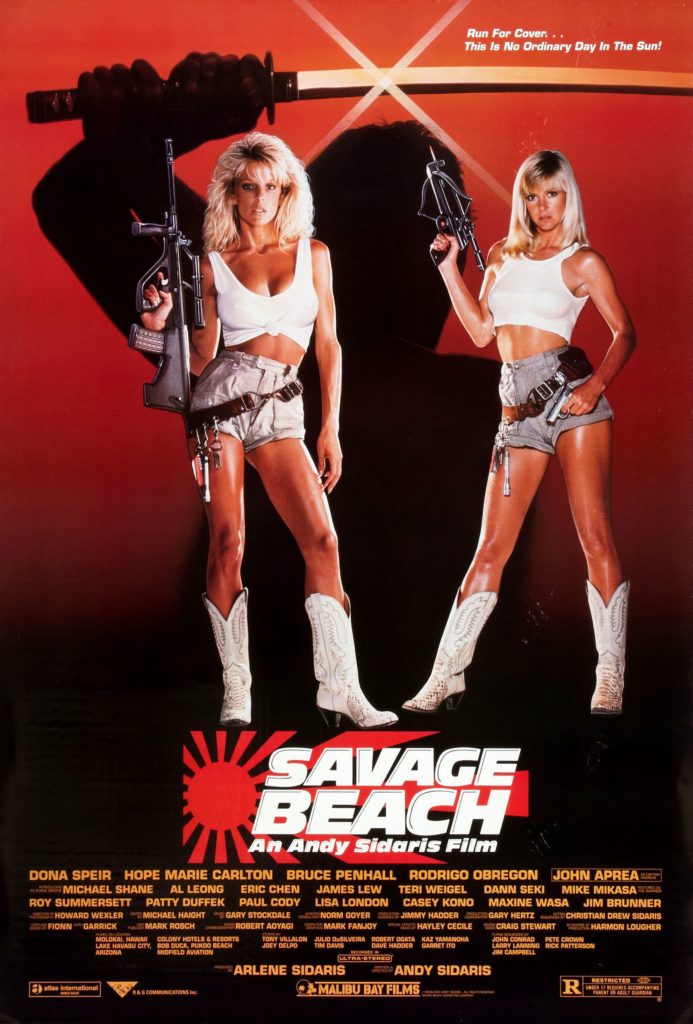
Within the Sidaris-verse are contained several overlapping sub-series, too. The Donna & Taryn set; HARD TICKET TO HAWAII, PICASSO TRIGGER, and SAVAGE BEACH. The Donna films continue whilst picking up Nicole for GUNS, DO OR DIE, HARD HUNTED, and FIT TO KILL.

The Kane ‘trilogy’ is contained in there too. Mister Miyagi himself, Pat Morita, plays the villain, and kicks off 1991’s DO OR DIE by alerting Donna and Nicole that their long history (even though this is his first appearance in the franchise and only the second film to feature Donna and Nicole as a team with Taryn being Donna’s partner only two years before) of frustrating his evil schemes has led him to set up this sporting challenge: he is sending several teams of assassins to take them out over the course of 24 hours. 1993’s HARD HUNTED and FIT TO KILL continue and conclude the irreconcilable Kane storyline with Geoffrey Moore (son of actual James Bond Roger Moore) taking over the role of Kane (including re-shooting a key scene from DO OR DIE to be used as a flashback to preserve continuity even though the character’s race and backstory appear to have changed dramatically).
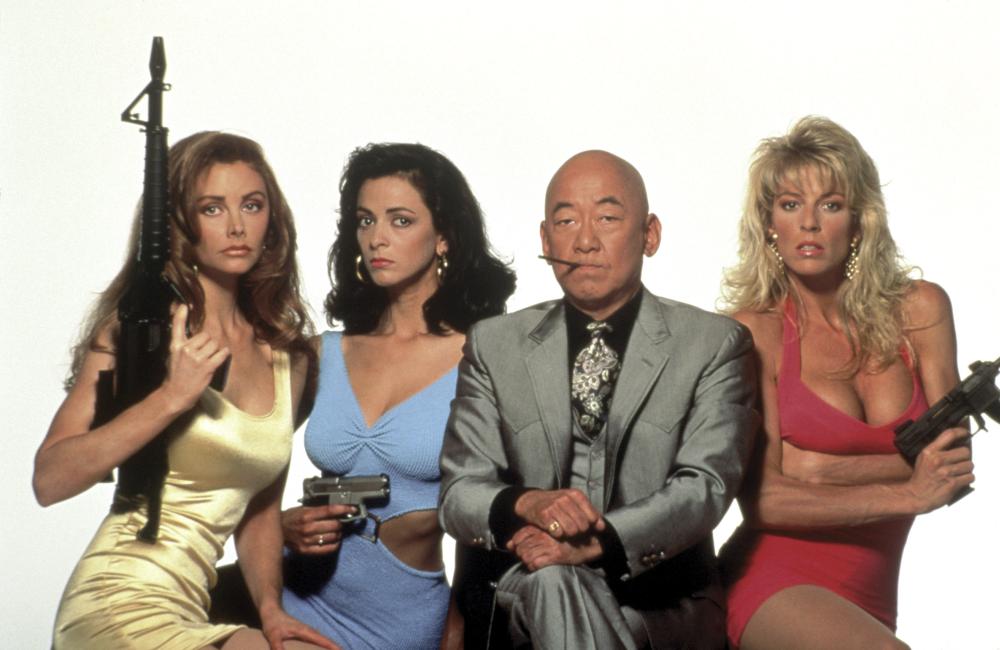
In 1993, Andy Sidaris briefly stepped back into the role of producer and let long-time team member Christian Drew Sidaris (Andy’s son, series 2nd unit director and, seven-time bit player) take over directing duties for a couple of self-contained films, letting for the first time a duo of male agents (Bruce Penhall and Mark Barriere) hold center stage in ENEMY GOLD and reprise their roles just off-center in THE DALLAS CONNECTION.
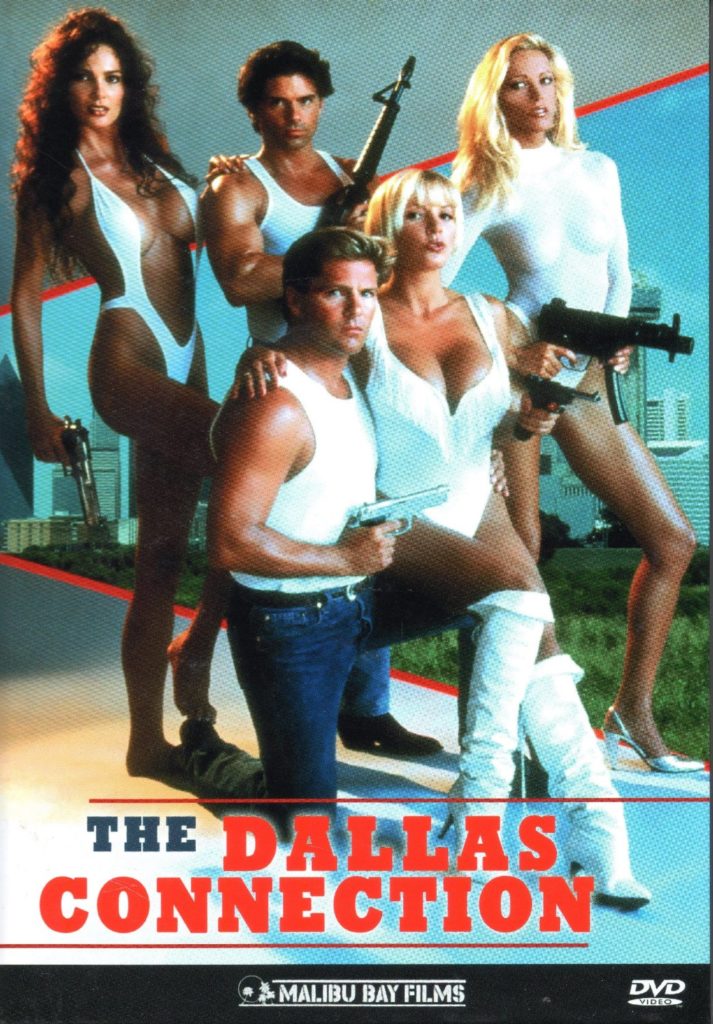

The Abilene family saga is MALIBU EXPRESS (Darby Hinton as Cody Abilene), HARD TICKET TO HAWAII (Ronn Moss as Rowdy Abilene), PICASSO TRIGGER (Steve Bond as Travis Abilene), and SAVAGE BEACH, GUNS, DO OR DIE, and FIT TO KILL (Michael J. Shane as Shane Abilene).
The final sub-set of films feature Andy returning to the director’s chair for DAY OF THE WARRIOR and RETURN TO SAVAGE BEACH, with Julie Strain finally playing good guy Willow Black, and Marcus Bagwell as the Warrior.
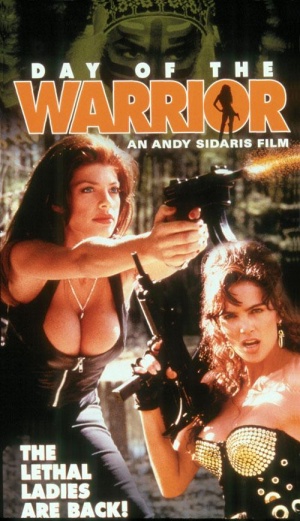
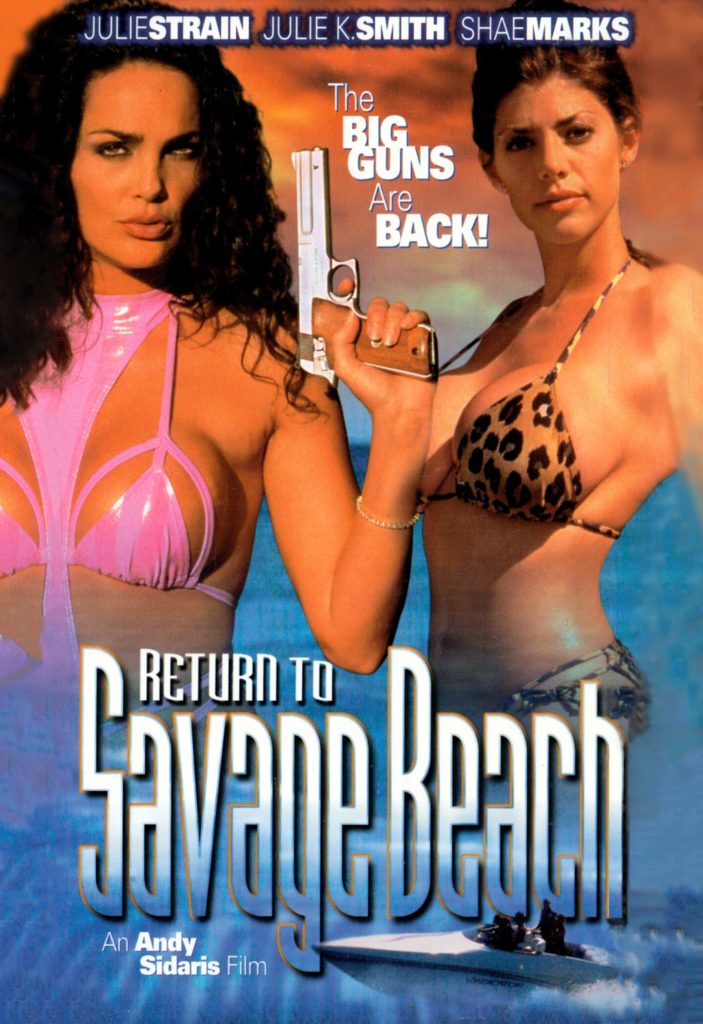
Worth noting is the absence of any rape-fantasy in Sidaris’ films. For as much onscreen sex and nudity as the films contain, there isn’t any non-consensual and very little coerced sex to be found, nor is there any creeping, voyeurism, or slut-shaming. All sexual congress seems like a good idea to everybody involved, and everybody appears to enjoy it equally. In fact, for as much sex as the films contain, they’re remarkably un-horny. Never is any character in a desperate rush to complete, no one tears off their clothes, pants after a partner or verbally expresses any unreciprocated desires. Every participant seems well-versed, equally skilled, and in no hurry to finish, content to go slow to the slowly bleating saxophone. Nobody bites, bleats, or humps in a Sidaris picture. Young persons given the films as an introduction to sex would get the impression that coitus consisted solely of lingering kisses on both torsos, hands stroking backs and ribcages, and both participants making yummy sounds while cuddling.
A couple possible exceptions to the previous paragraph follow: In MALIBU EXPRESS, Brett Baxter Clark’s Shane surprises Lorraine Michaels’ Liza in the shower, and after she initially indicates that he’s not welcome, appears to succumb to what appears to be a regular tryst, before he reveals that he’s taken pictures of them that he will be using to blackmail her. “Damn you, Shane, you son of a bitch,” she yells at him, shortly before Shane is murdered for having pulled the same trick with multiple members of the household, including the only occurrence of gay sex in the entire series (though only alluded to) with Michael A. Andrews’ Stuart. Also in THE DALLAS CONNECTION, Julie Strain’s assassin Black Widow briefly toys with agency target Nicholas Lang (Roland Marcus) by rendering him unconscious, only to awaken bound to a chair with leather restraints. She proceeds to half-undress him and dance around him in a chain-and-leather bondage outfit, letting him transition from scared and confused to confused and turned-on before shooting him in the head. In both instances, the violator is clearly portrayed as a villain, and in neither does sexual involvement lead to (or have the chance to lead to) drama down the line. As often as The Agency team members cuddle and make yummy sounds, nobody seems to carry baggage from film to film, sparing their H.R. department tons of paperwork in the largely post-Anita Hill testimony productions.
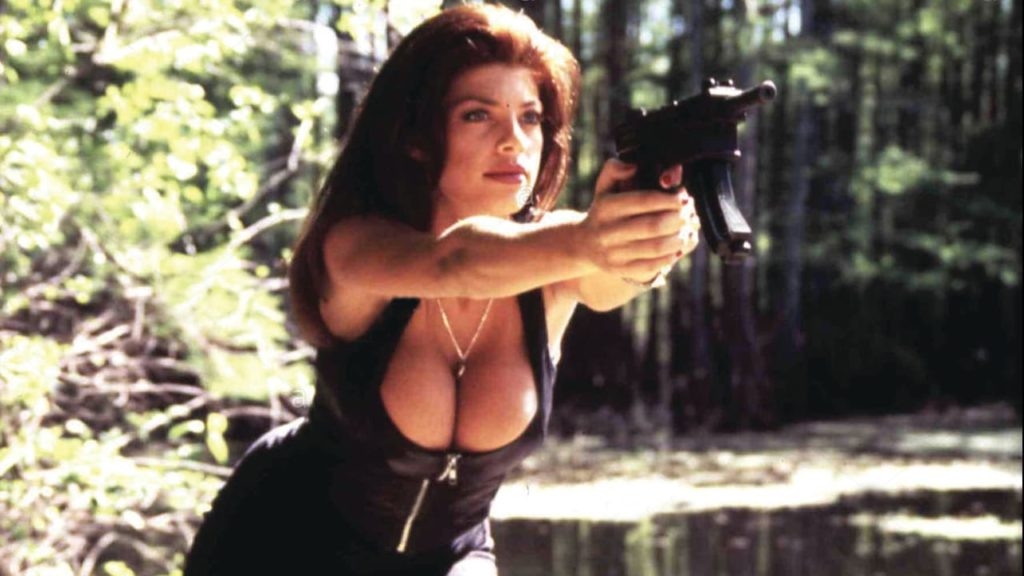
But move past the sex and nudity, and you’ve barely scratched the surface of the delightful oddness that permeates these films. For instance, nudity abounds, but hardly a non-network-TV-friendly word is uttered, although (don’t go in applying modern sensibilities and sensitivities to these films) the occasional other F-word is dropped early on, especially in MALIBU EXPRESS in reference to the Stuart character. Still, when said character is discovered by the uber-hetero protagonist detective to be leading a double life as a drag queen Cody speaks into his tape recorder, “I don’t believe this one; Stuart has just turned into the most gorgeous woman!” He’s tickled and delighted to discover that the character he’s assumed was contemptibly boring is in fact a fascinating subject. Drag performer and Miss Gay America Pageant Winner 1977 Michael A. Andrews appeared in drag in both MALIBU EXPRESS and HARD TICKET TO HAWAII would possibly have been a series regular, had he not died in 1989 at the age of 39.
Standout entries of the series are MALIBU EXPRESS, HARD TICKET TO HAWAII, GUNS (which features an early performance by Danny Trejo, as well as probably best jokes of the franchise – a series of set-ups for nude scenes that don’t happen until nearly thirty minutes into the film, including a Vegas showgirl number, an ocean swim, and two changes of clothes), THE DALLAS CONNECTION for Julie Strain’s overwhelming energy, and DAY OF THE WARRIOR for the wrestling stuff.

Despite low budgets, a Sidaris production maximizes onscreen dollars in the form of location shooting in stunning natural locales, and handily bests all modern CGI pyrotechnics by actually blowing up a lot of shit for reals. The heat coming off of the many explosions may cause spontaneous weeping amongst action fans longing for something as satisfying in modern low-budget filmmaking.
Other recurring oddities of Sidaris films include weaponized remote control toys (so many bombs attached), skateboarding assassins, blow up dolls (seriously, what’s with all the dolls?) and references to old films. The James Bond nods would go without saying if the characters themselves didn’t constantly feel the need to say them. Even references to other Sidaris films aren’t allowed to go by unpunctuated: in HARD TICKET TO HAWAII, the Taryn character has posters hanging in her home for STACEY, SEVEN, and MALIBU EXPRESS, and even notes that Cody Abilene has moved on from being an agency operative to pursue a career in acting. While you may have to know what you’re looking for to appreciate a FORBIDDEN PLANET nod, again, the characters need to explain how they’re referencing Marlon Brando in THE WILD ONE.
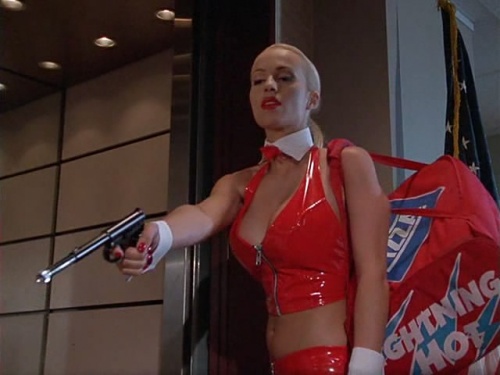
Numerous scenes of oiled-up actors performing dance/stretching routines with various martial-arts weapons (nunchucks, swords, or bare motherfucking hands) accumulate over the course of the franchise.
The films also invariably wrap with the characters assembled for a champagne toast, explaining to each other the plot of the film just seen.
Arlene Sidaris claims that every weird element turning up in the films appeared first in the scripts, but the movies often feel like found-object projects with hypothetical crew members volunteering that their cousin is a magician, Sumo wrestler, skateboard enthusiast who can do a handstand, owns a pair of women’s shoes large enough for a big guy to wear, has access to a boat, hovercraft or a tuxedo and Andy, ever the opportunist, saying “I’ll write a scene around that, and we shoot tomorrow,” and the viewing is equally pleasurable when encountering series stand-bys (probably should have a shower scene here, action dudes who can’t shoot, been a minute since we blew anything up with an explosive crossbow, hey y’know what’s always funny? – inflatable dolls) or brand-new out-of-nowhere gags (the poisoned cat in DO OR DIE, the Frisbee kill in HARD TICKET TO HAWAII, PICASSO TRIGGER’s eye-plucking/ Uzi-wielding, or the slow realization that arguably the softcore queen of the era, Sybil Danning, is the only major female player not to be nude in MALIBU EXPRESS).
If you like gorgeous natural locations, beautiful bodies, big guns, bad music, dumb jokes, dance numbers, kung fu, great explosions, bright colors, and fiercely-true-to-their-vision filmmakers, for fuck’s sake, check out Sidaris’s oiled-up body of work.
Tags: Al Leong, Andy Sidaris, Anitra Ford, Anne Randall, Art Metrano, Ava Cadell, Barbara Edwards, Barbara Leigh, Bob Bondurant, Brett Baxter Clark, Bruce Penhall, Buff Bagwell, Carolyn Liu, Carrie Westcott, Cassidy Phillips, Cats, Christian Drew Sidaris, Chuck McCann, Cristina Raines, Cynthia Brimhall, danny trejo, Darby Hinton, Don Randi, Dona Speir, Dr. Ava Cadell, Edwin “Chu Chu” Malave, Eric Chen, Erik Estrada, Explosions, Geoffrey Moore, George Cheung, Gerald Okamura, Harold Diamond, Hope Marie Carlton, James Garner, James Lew, John Aprea, Joy Philbin, Julie K. Smith, Julie Strain, Kevin Eastman, Kimberly McArthur, Lenny Montana, Lorraine Michaels, Lynda Wiesmeier, Malibu Bay Films, Marcus Bagwell, Mario Andretti, Marjorie Bennett, Mark Barriere, Martin Kove, Michael A. Andrews, New World Pictures, Pandora Peaks, Pat Morita, Penthouse, Playboy, Reggie Nalder, Regis Philbin, Richard Cansino, Roberta Vasquez, Rodrigo Obregón, roger corman, Roland Marcus, Ronn Moss, Samantha Phillips, Shae Marks, Skip Ward, Snakes, Softcore, Steve Bond, Susan Kiger, Suzi Simpson, sybil danning, Teri Weigel, The 1990s, Wendy Hamilton, William Smith

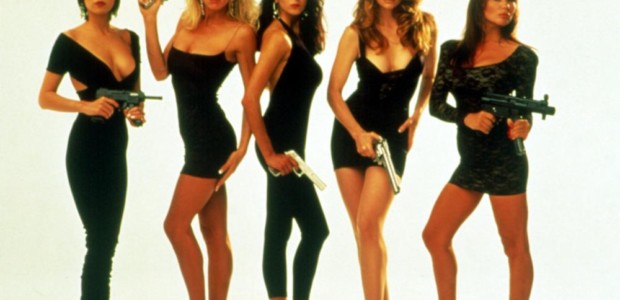
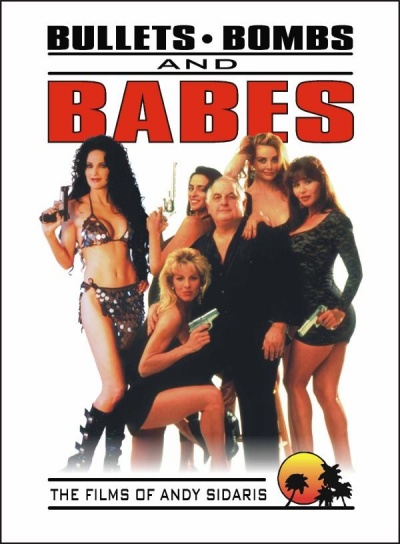
Really wonderful article on Andy Sidaris films, you captured them perfectly. Sexy, bizarre action films. I remember stumbling over one late night on a cable channel back in the day, and finding it surprisingly well done and enjoyable. I was astounded to find another and realize that they were part of a series, with no way to find others (pre-public-internet) except to watch for anything with Dona Spiers. I’ve since been able to collect them all and they’re as good as I remember.